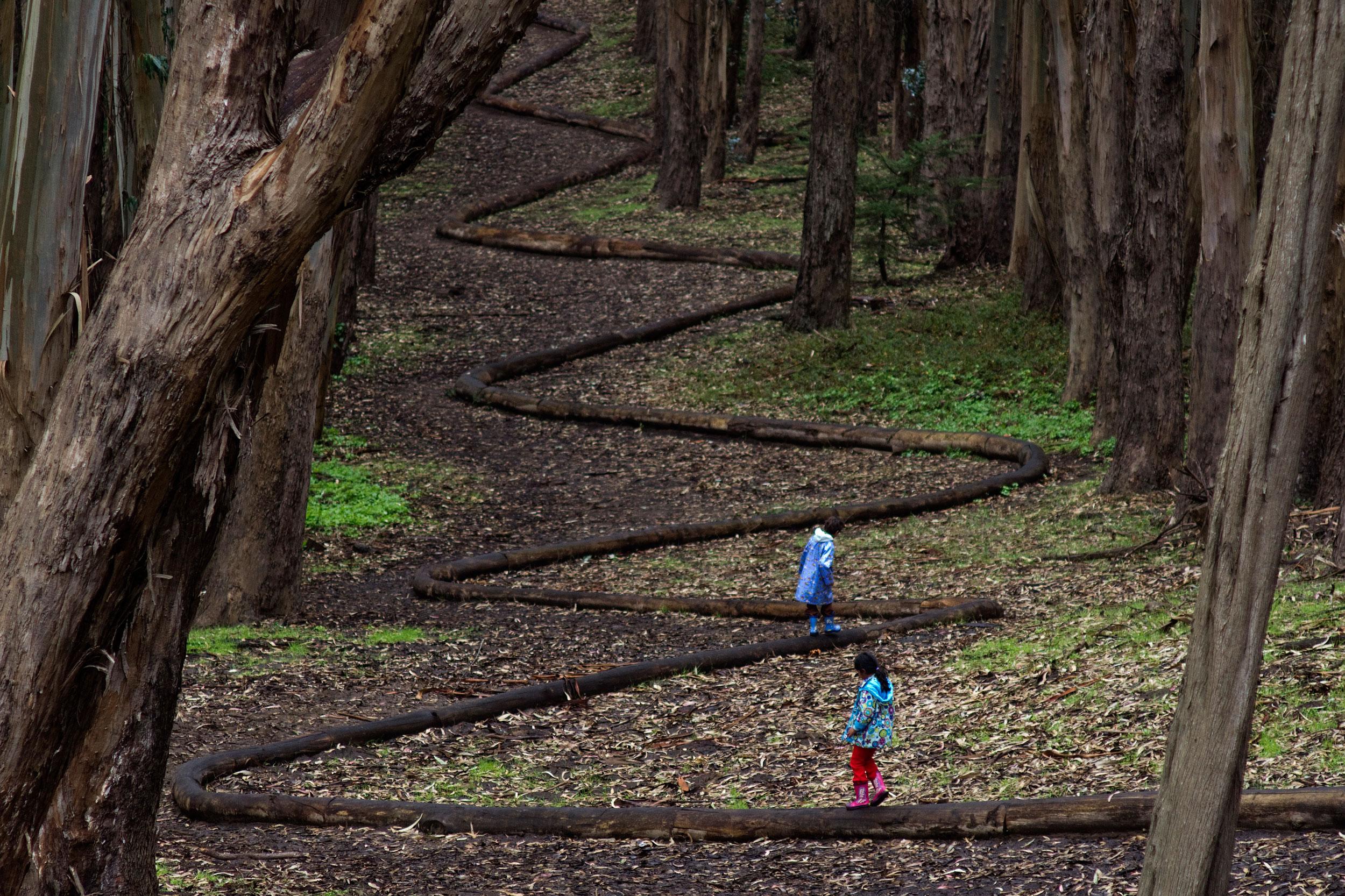Andy Goldsworthy's Wood Line Celebrates the Presidio Forest
Organized by the FOR-SITE Foundation, in partnership with the Trust
Presidio of San Francisco (August 19, 2011) — British artist Andy Goldsworthy has followed the success and popularity of his Spire with a second outdoor art installation celebrating the historic Presidio forest and the Presidio Trust’s efforts to preserve it. Completed in early August, Wood Line is an innovative way to tell the story of the forest and its ongoing regeneration.
Organized by the FOR-SITE Foundation, in partnership with the Trust, Wood Line is located between Lover’s Lane and Presidio Boulevard, in an historic Eucalyptus grove planted by the US Army over a century ago. Goldsworthy began the project in the summer of 2010, in an opening in the forest left by a row of Monterey Cypress trees that didn’t survive amongst the Eucalyptus. As with Spire, Goldsworthy used the forest as muse, materials and canvas in creating Wood Line. Eucalyptus branches taken from various park construction and reforestation projects were laid end to end, forming a sinuous path through the forest that Goldsworthy describes as “drawing the place.”
Wood Line is not as ephemeral as some of Goldsworthy’s other works, but the sculpture is not conceived as a permanent addition to the Presidio landscape. Like many of the artist’s site specific works, the materials will decompose and return to the earth over time. Similar projects have lasted anywhere from five to twenty years depending on soil conditions and the types of trees used.
Born in 1956, Andy Goldsworthy spent his childhood in Yorkshire, England. His work has been made in the open air, in places as diverse as the Yorkshire Dales, the North Pole and the Australian Outback. In the Bay Area, his works include Stone River at Stanford University, made from the rubble of the Loma Prieta earthquake, and Drawn Stone at the de Young Museum in Golden Gate Park, which also recalls San Francisco’s earthquakes and their effects.
On a 2006 visit to the Presidio, Goldsworthy found inspiration in the history and character of the forest. Two years later, he created Spire, a 95-foot sculpture that pays homage to the forest’s “history and natural rhythms”as it welcomes a new generation of trees in one of the key historic stands in the park. Constructed from Monterey Cypress trees felled as part of the Presidio’s reforestation project, the sculpture will eventually disappear into the forest, engulfed by the young cypress trees planted around it.
Planted by the Army in the late 1800’s, the historic Presidio forest is the park’s most dramatic natural feature and is the most vivid example of how people shaped the park’s landscape. Now well over 100 years old, the trees provide habitat for birds and wildlife and contribute to the Presidio’s National Historic Landmark status.
As the trees reach the end of their natural lifespan, the forest is gradually being replanted. Each year the Trust replants two to three acres, staggering the effort to create an uneven-aged forest that is more easily sustained. Since 2002, the Trust has planted more than 2,000 trees while preserving qualities that define the forest’s character, like the orderly military alignment of the trees.
Launched in 2003, the FOR-SITE Foundation is a San Francisco based non-profit organization dedicated to the creation, understanding and exhibition of art about place. FOR-SITE fulfills its mission through artist residencies and graduate-level education projects at its residency site in the Sierra foothills and more recently through site-based projects in the Presidio of San Francisco. For more information visit: www.for-site.org.
The Presidio Trust was established by the United States Congress in 1996 to administer the Presidio of San Francisco, an urban national park site located at the base of the Golden Gate Bridge. The areas overseen by the Trust include expansive open space and spectacular views, a 300-acre historic forest, and rare and endangered plants and wildlife. The park is home to 13 distinctive plant communities featuring 280 native plant species, 16 of which are rare or endangered. Thousands of hours of volunteer work have restored many acres of natural resource habitat. The Presidio Native Plant Nursery grows 60,000 plants each year to make this restoration possible. 21st-Century “green” practices are employed in all building and landscape rehabilitation efforts.
